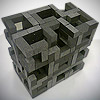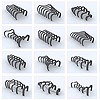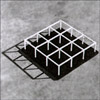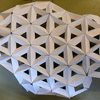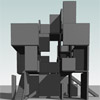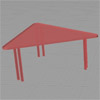This paper presents the beginnings of my journey into architectural education, presented at Yıldız Technical University Architectural Education Symposium 2007, together with YTU/CADU staff; Ela Çil, Birgül Çolakoğlu, Meral Erdoğan, Fulya Akipek, Oya Pakdil, and Şebnem Yalınay. It includes different exercises from various studio instructors, all motivated by contemporary computational design theory. This was one of the milestones in the first year of education of a computation-based studio in Turkey, […]
Posts with the keyword design exercises
In 2007, we conducted a computational design studio in YTU / CADU with Birgül Çolakoğlu. Below is the brief of the paper published at METU JFA Vol24 issue 2 titled “An Innovative Design Education Approach: Computational Design Teaching For Architecture”. We were dealing with how new technologies are affecting the design cycle. Rhinoscript is used as an educational tool, and various short exercises are conducted with it. After 6 years, […]
This was last week’s Basic Design II exercise at İstanbul Bilgi University, a captivating challenge that pushed students to explore the realm of solid and void compositions using pre-defined components. The objective was to construct intricate structures that intertwine solids and voids in visually striking ways. Recognizing that these compositions may be intricate and difficult to comprehend solely through visual outputs. The students were encouraged to prepare Rhino models as […]
Architectural education in its relation to computational technologies is both becoming a part of these studies and having the potential of renovating itself with the knowledge of emerging technologies. This paper, in this framework, will be presenting a design research studio that aims at developing relational thinking capabilities in the computational design process. In this studio, topics of parametric design, parametric modeling, and relationality were questioned through the design process. […]
This simple tool, N-Grid resembles John Hejduk and colleagues’ famous design exercise “The Nine-Square Grid”. I developed the tool in 2009 using MaxScript. The nine-square grid is one of the most common kit-of-parts exercises in design studios for over 50 years. To explain briefly, the nine-square grid exercise is based on transforming a nine-square grid into a series of alternatives. The nine-square grid is an open-ended educational application with a limited but flexible context. It […]
Studio exercises are short-term and open-ended design activities that represent a constructivist learning approach by limiting design domains. They are student-centered, model and process-oriented educational tools. These qualities make studio exercises potential tools for integrating contemporary Digital Design thinking into architectural education. This research aims to reveal these potentials by defining an analytical perspective and logical connections between the pedagogical intentions of studio exercises and the theory of Digital Design. […]
This was last year, Salih Küçüktuna had organized a one-day exercise at the first-year Basic Design studio. It was a quite successful event, both emphasizing the fundamentals of contemporary design ideas and also being very pedagogical regarding the method. We asked students to bring blank regular business cards and staples to the studio. The main idea was to design a component and multiply it to create a structure that spans […]
The logical structure of computer-aided architectural design tools is based on object orientation. New design methodologies named Building Information Modeling or Virtual Building aim to improve this structure by synchronizing the digital object classes with real architectural products. Therefore, CAD becomes smart and parametric. But from the design educator’s point of view, most commercial CAD tools are not useful and too complicated to implement basic spatial concepts. This is the […]
[GHX:0.8.0066] This is a rather traditional geometry exercise we used to make in MaxScript. Grasshopper is also quite capable of associative geometry and real-time parametric designs of objects. The exercise of designing a furniture family should be based on design research, followed by shape alternatives and sketches (both digital and hand), then might be finalized using this parametric design environment. However, the example presented here is one of the most simplistic […]
When an educational system does not meet the requirements of a paradigm, new teaching approaches start to emerge. Today, design computing pushes forward a similar transformation on architectural education. Design studio, as the dominant setting for architectural learning, is the center of this transformation. There are numerous researches, experiencing and defining this transformation from various perspectives as “cases”. However as Oxman (2008) highlights, we still need to define a general […]



